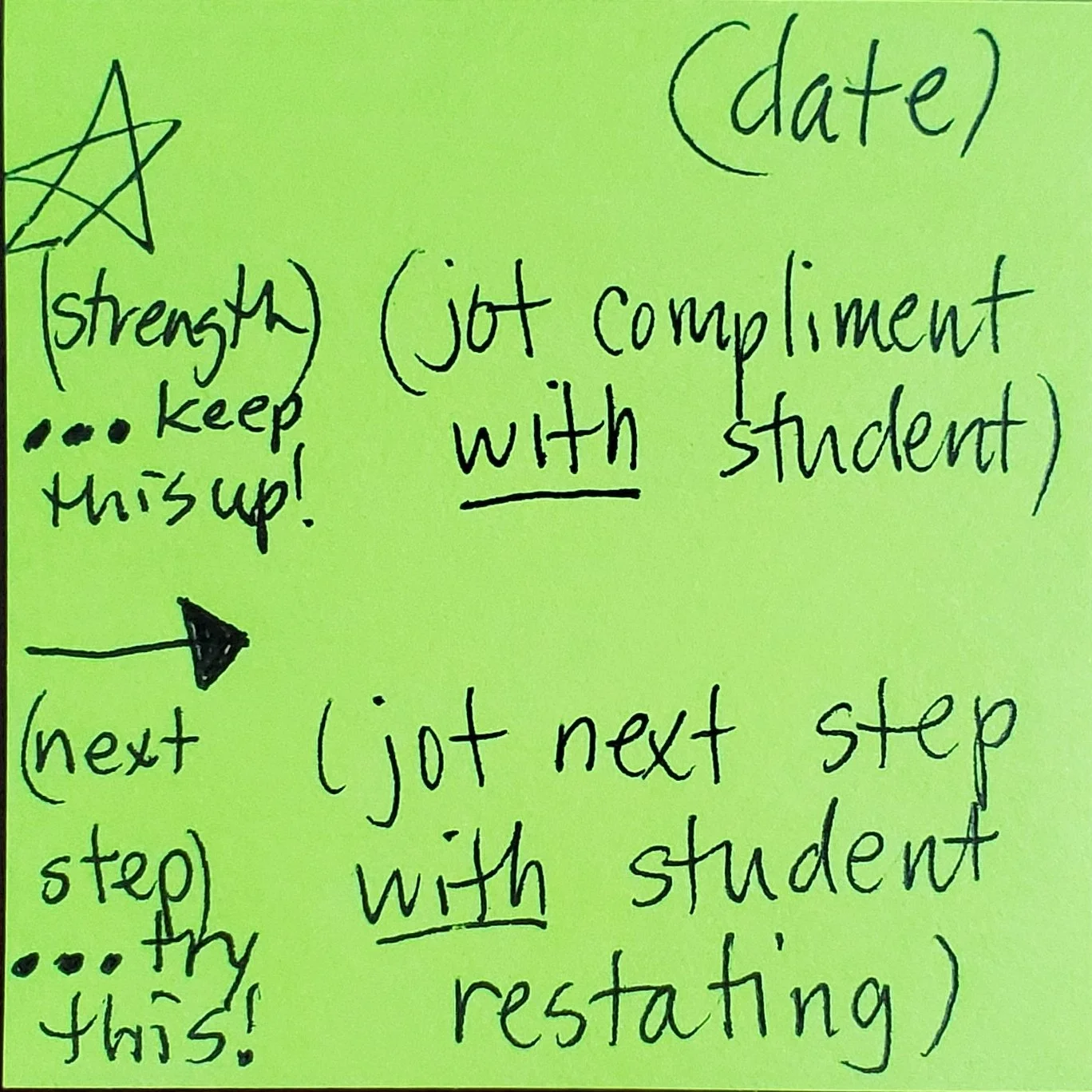conferring with readers & Writers
Conferring is one of the most impactful ways to get to know each student’s strengths and needs while also informing future instruction. Teachers move around the room as they confer, meeting with two-three students over the course of a workshop while other students work independently.
choosing and designing your conferring system
Some questions to consider as you develop and revise your conferring system:
Is my record keeping system portable?
Does my system allow me to track individual student progress over time?
Does my system allow me to track class progress over time?
Can I easily track students that I have and have not conferred with?
How and when do I reflect on the trends that I’ve noticed and noted to impact and adjust my upcoming whole group (most), small group (some) and conferring (one-on-one) instruction?
How does my system allow for communication between colleagues that are also supporting my students?
Using an 11”x14” version of the graphic below (a new page for each month) has been the most effective system I have found. I keep my students’ reading and writing conference notes on the same “month” page and their names remain in the same box when I move on to a new month. This allows me to see who I have and need to confer with, make reading/writing connections for learners, and gather trends for future instruction.
balancing Conferring with Small Group instruction
Striking a balance between conferring and small group instruction is a never-ending journey. I adjust my schedule often for which learners I will be working with one-on-one (in a conference) and in small groups based on trends I find within my conferring notes and assessment data. I remind myself that learners need both because small groups are scaffolded instruction and conferring is where the rubber meets the road. Conferring is when I see what each learner can do independently and use that information to inform and plan upcoming instruction.
I plan to confer for 15 minutes with 2-3 learners within each 30-45 minute independent reading and writing block. To support transfer and making connections for myself and my students, I try to “paint a portrait” of these 2-3 children over the day, conferring with them in all content areas (e.g. reading, writing, math, science, writing, social studies). I even take a moment to see who they eat and play with to have a better understanding of their connections and friendships. Depending on how many students I have in class, I will confer with my whole class every two weeks.
I also use 15-30 minutes of students’ independent reading and writing block to work with them in small groups. I am constantly reminding myself that if I only work with striving learners in small groups, I am creating a learned helplessness and depriving them of conferences as well as time to read and write independently. Some other repercussions to consider when striving learners are only supported through small group instruction are:
missing opportunities to take on standards independently
lacking stamina for independent reading and writing because they do not have time to work by themselves
teachers not being able to see if students are taking small group and standard/unit of study content into independent practice when they are not conferred with one-on-one
I try to divide my class in half each week (represented by the graphic below), knowing I will only confer with some students and work with others in small groups. The second week, I flip, working in small groups with children I conferred the previous week and vice versa.
conferring Lenses
Below are some of the many lenses to confer and teach through when working one-on-one with learners:
Phonological awareness and vocabulary understandings
State standards / units of study content (minilessons)
Reading and writing behaviors / progressions / processes
Nuances of genres / text structures, forms and features
Expectations / habits
conference Structure
I strive to keep conferences to 5-6 minutes each, knowing that time for independent reading and writing is never enough during the school day. This is no small feat! While conferences should feel conversational, having a structure in mind helps me to keep focused. At the end of each conference, I make sure to co-create a goal post-it with each student that they will keep. I take about 30 seconds to catch up my own conferring notes between conferences. This also gives me a moment to sit quietly (still by the student I just wrapped a conference with) to see what their next move is after our conversation ended.
Here’s the structure I follow most often while conferring:
start by researching for student’s strengths <zone of actual development>
research for what student is trying but needs clarifying and coaching around
<zone of proximal development>lastly, research for what is absent and needs to be taught/revisited in future instruction
<zone of future development>choose a strength to compliment and one teaching point (as a next step) to leave student with on their own goal post-it






